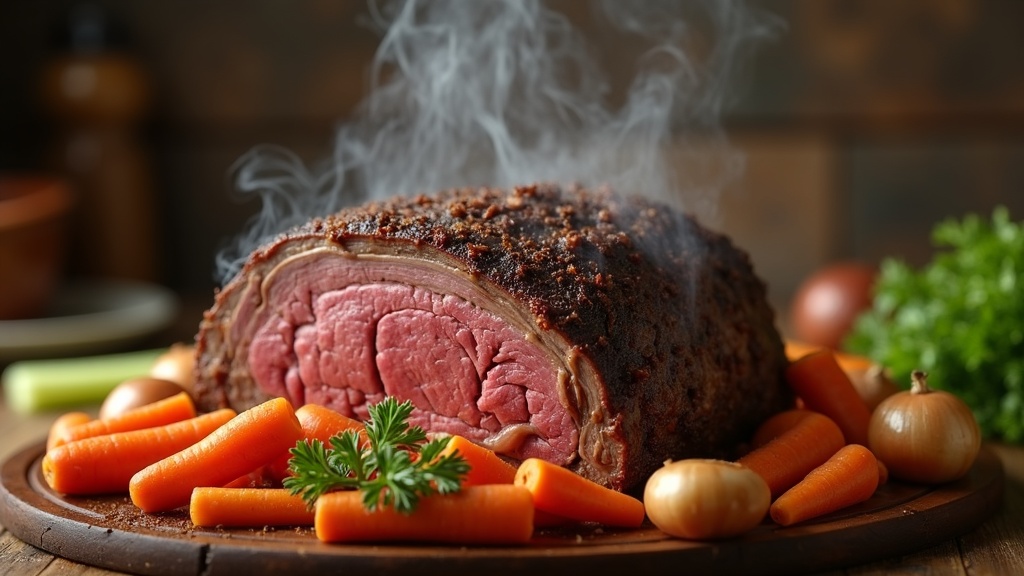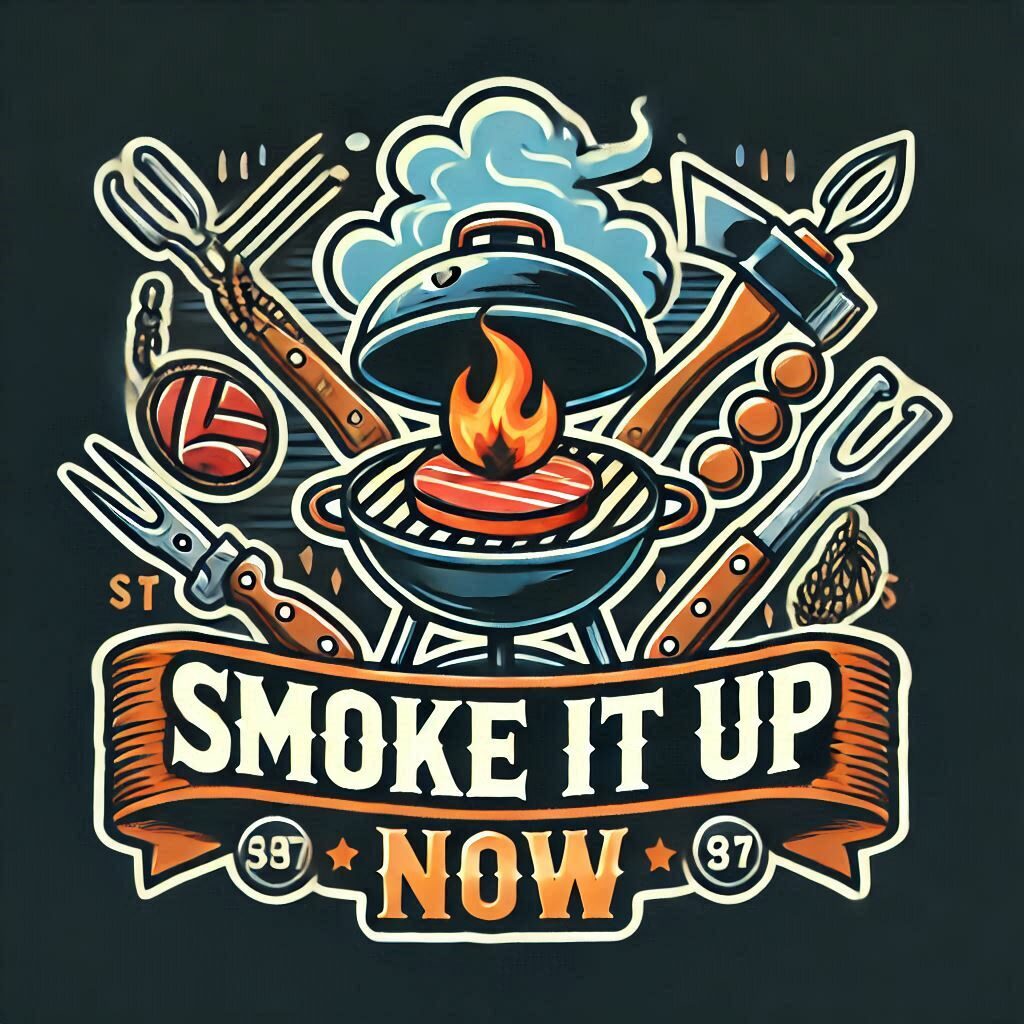
The Smoked Pot Roast Recipe That Delivers Big Flavor Every Time!
The smell of smoky beef drifting from the smoker is one of those things that just calls everyone to the table. Over the years, smoking a pot roast has become one of my favorite ways to take comfort food up a notch. This recipe always comes out with a juicy, fork-tender roast that tastes like it’s spent all day soaking up flavor, and honestly, that’s exactly what it’s done.
Smoking a pot roast isn’t just about getting a smoky crust. When you let the meat slow-cook surrounded by wood smoke, the result is a rich, deep flavor that regular roasting or slow cooking just can’t match. And while it looks impressive, it’s actually really easy to do with a bit of planning. The best part? Leftovers taste just as awesome, maybe even better.
Reasons to Try Smoked Pot Roast
- No fancy gear needed. Just a basic smoker, grill, or even a kettle grill with some wood chips does the trick.
- Huge flavor payoff. The smoke brings a next-level cool richness that makes this roast stand out.
- Comes out tender every time. Slow smoking means every slice is juicy and packed with flavor.
- Feeds a hungry group. Great for family dinners and weekends when you want something hearty.
Gather Your Ingredients
Here’s a quick list of what you’ll need before you get started:
- 1 (3–4 lb) chuck roast or similar beef roast (like brisket or round)
- 2 tablespoons olive oil
- 2 tablespoons kosher salt
- 1 tablespoon coarse black pepper
- 1 tablespoon garlic powder
- 2 teaspoons onion powder
- 2 teaspoons smoked paprika
- 1 teaspoon dried thyme
- 1 teaspoon dried rosemary
- 1 teaspoon brown sugar
- 1 cup beef broth
- 1 cup beef stock or more broth (for the braising phase)
- 1–2 onions, sliced
- 3–4 carrots, peeled and cut into chunks
- 2–3 celery stalks, cut into pieces
- 2–3 cloves garlic, smashed
- Wood chips or wood chunks (oak, hickory, or applewood all work well)
Step-by-Step: Smoking the Perfect Pot Roast
1. Prep the Roast
Start by taking your roast out of the fridge about an hour before you plan to smoke. This lets it warm up a bit and helps it cook evenly. Pat the roast dry with paper towels and rub it all over with olive oil. Mix all the dry rub ingredients (salt, pepper, garlic powder, onion powder, smoked paprika, thyme, rosemary, and brown sugar) in a bowl. Coat the roast generously, pressing the rub into every nook and cranny. Allowing the roast to sit out like this also helps the seasoning really soak in, locking in moisture and building flavor.
2. Set Up Your Smoker or Grill
Get your smoker or grill set up for indirect cooking at 250 to 275°F (120 to 135°C). Add your choice of wood chips or chunks. I usually go with hickory or oak for a classic beefy flavor, but applewood gives a lighter, sweeter smoke if that’s your style. If using a kettle grill, arrange the charcoal to one side and place a drip pan under the meat to catch juices; wood chips can go directly on the hot coals for a steady stream of smoke.
3. Smoke the Roast
Place the roast right on the smoker or on the cool side of your grill. Let it smoke, uncovered, for 2 to 3 hours. You’re looking for a deep, mahogany color on the outside. Every smoker is a little different, so you might check more by color and aroma than by the clock. If you notice any dry spots, you can spray or brush a little beef broth on top. Keep in mind that outdoor conditions, thickness of the roast, and type of smoker can extend this stage, so stay flexible and patient.
4. Time to Braise
After your roast is nicely smoked, grab a foil pan or Dutch oven. Layer the onions, carrots, celery, and smashed garlic on the bottom, then set the roast right on top. Pour in the beef broth and stock. Cover tightly with foil or a lid, then return to the smoker or pop it in a 275°F oven if you need the smoker for something else. The moisture in this step helps soften the meat while pulling in savory flavors from the veggies and broth.
Let it braise for another 3 to 4 hours, or until the beef shreds with a fork. Aim for an internal temp around 200 to 205°F (93 to 96°C) for that classic pot roast texture. If you’re in a hurry, you can raise the heat to 300°F for a quicker finish, but the longer, slower braise gives unbeatable tenderness. Occasionally check the liquid; add more broth if it looks like it’s getting dry at the bottom.
5. Finish and Serve
Once the roast is tender, transfer it carefully to a platter and let it rest for at least 15 minutes. This short rest locks in all those juices you worked so hard to develop. Skim off any extra fat from the braising liquid and remove the herb stems and veggie scraps. You can serve the braising veggies just as they are or mash them into the sauce for gravy. For a rich finishing touch, reduce the braising liquid on the stovetop until slightly thickened. Slice or pull the meat apart, pour a little juice over the top, and you’re ready to eat, surrounded by the smell of wood smoke and pure comfort.
Tips and Twists for Smoked Pot Roast
- If you’re all about a spicy kick, toss a teaspoon of chipotle powder or cayenne into your rub. Adjust the amount based on how much heat you want.
- Try using root vegetables like parsnips or turnips in your braise for extra sweetness and depth of flavor. Mixing in different veggies keeps every bite interesting.
- Want an extrasaucy roast? Double the broth and thicken with a cornstarch slurry after braising. The extra sauce makes for amazing leftovers too.
- For a bolder crust, throw the roast back on the smoker uncovered for 30 minutes after braising for more bark—that crunchy, caramelized surface.
- Leftovers make crazygood sandwiches, tacos, or even breakfast hash with fried or poached eggs. The smoked flavor stays strong even the next day.
- Switch things up with different seasoning blends or add a splash of red wine to your braising liquid for a deeper, richer taste.
Common Questions About Smoked Pot Roast
Q: Can I smoke a roast without a smoker?
Yes. You can set up a regular grill for indirect heat and add wood chips (use a smoker box or foil pouch). Keep the temp low and cook covered, and you’ll get plenty of smoky flavor. Remember to check in on the wood chips and add more if smoke slows down.
Q: Is chuck roast the only good cut for this?
Nope. Brisket, round roast, or even tritip will work, but the chuck roast is my go-to for its fat content and tenderness after a long smoke.
Q: What wood works best for pot roast?
Hickory, oak, and pecan give classic beefy smoke, but fruit woods like apple or cherry are lighter and add a subtle sweet note. They all taste great, so use what you like. Mixing woods sometimes creates an even more memorable flavor profile.
Q: How do I reheat leftover smoked pot roast?
Add a splash of broth to a pan and warm the meat gently covered in the oven or on the stove. Microwaving works in a pinch, but gentle heat helps keep it juicy. If reheating a big piece, let it come to room temperature before reheating for even results.
Give Smoked Pot Roast a Try!
Smoking a pot roast is one of those projects that feels like a big deal, but it’s really just a relaxing way to spend the day around good food. Whether you’re new to smoking or already hooked on barbecue, this pot roast delivers every time. Set aside a day for it, let the smoke do its work, and you’ll have a meal worth remembering. If you give it a go, I’d love to hear how it turned out or what twists you added. There’s just something really satisfying about sharing a meal that brings everyone together—even before it hits the plate. Enjoy the adventure, and happy smoking!
